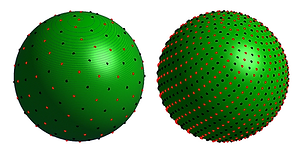Caterpillar Arm Project


This is my current personal project exploring the design and use cases of a self-designed omni-directional locking joint. I was inspired to create a simple universal locking joint by working with common solder station tools meant to stabilize objects or wires. I personally found it difficult when using wire-based support tools because the wires will always shift after being placed and locking stations are very slow when you have to adjust every joint.


So, I set out to create a support system that is as fast as a simple wire-based station but just as rigid as the locking systems.

Compounded Icosahedron/dodecohedron

I wanted to create a joint that looked the same from all angles and could be tightened using a single string running through itself.
I researched and iterated through many different designs, including advanced dodecahedrons and custom ball designs, before deciding to be inspired by the math behind a Fibonacci sphere. A Fibonacci sphere is a mathematical model where a sphere has equidistant points on its surface. While this is not truly possible, it is possible to approximate using a Fibonacci sequence.
While the mathematical model itself has an abundance of online documentation, within the CAD community it is non-existent. I created my Fibonacci-inspired joint using a custom Python script within Fusion that generated all the points, then the sketches for each protruding cone, and finally revolved each one and the inner sphere.
Fibonacci Sphere Model

Cones generated via Python Script


After finishing the model for my joint, I began creating the apparatus that could support the string tension in two arms given easy-to-use user input. I decided to use a Sabertooth 2X12 motor controller with two 12V worm motors, along with an Arduino Nano commanding relative to the resistance value on two potentiometers.
In the future, I plan to integrate current sensors in series with both motors to measure the current draw as the string’s tension increases. This will help the Arduino sense the torque on the motors and limit the stress on the system.







